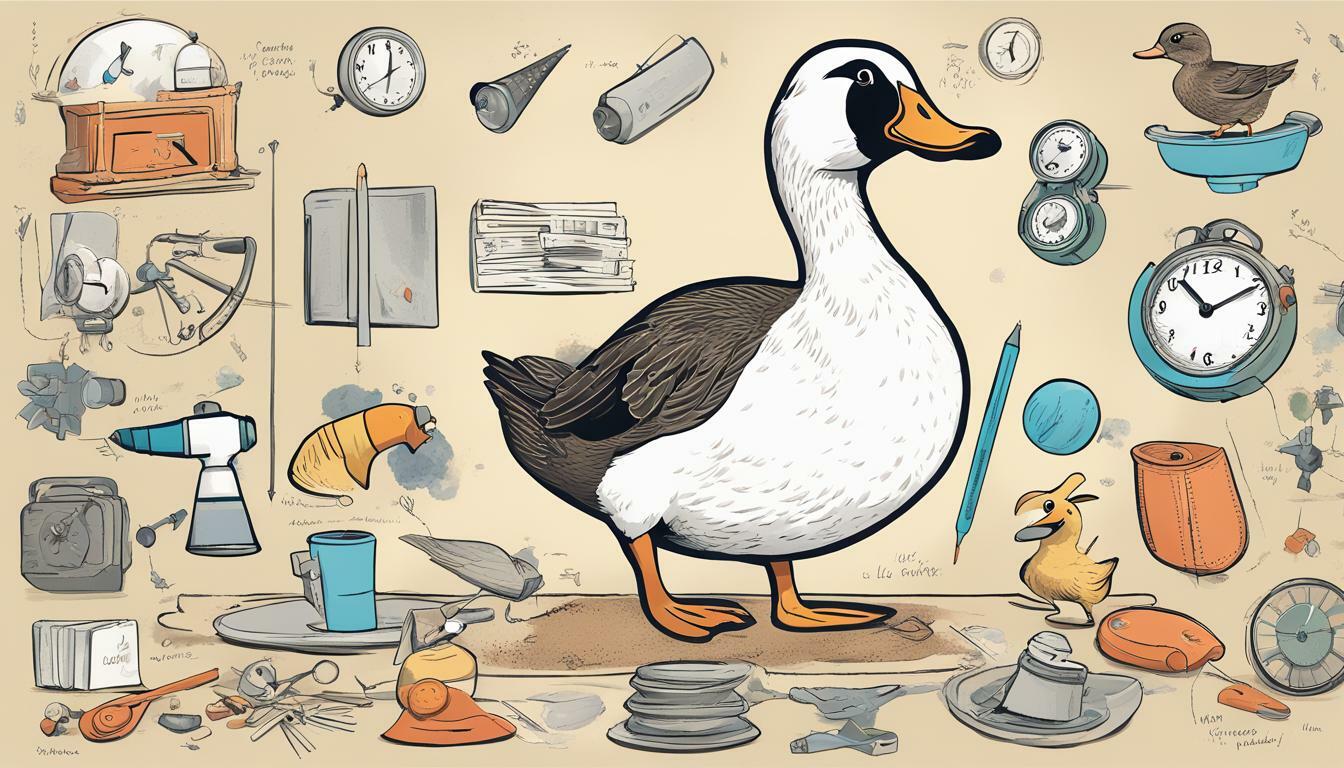Do Ducks Have Ears? Unveiling The Mystery

Daftar isi:
Ducks are a common sight in ponds, lakes, and rivers across the world. With their distinctive bill shape and their quacking vocalizations, ducks are easily recognizable birds. But while we may be familiar with a duck’s appearance, many people wonder about the duck’s senses. Specifically, do ducks have ears?
As it turns out, ducks do indeed have ears! However, their ears are not easily visible like a human’s or many other animals. Let’s take a closer look at why duck ears can be hard to spot, how well ducks can hear, and some other fascinating facts about a duck’s ears and sense of hearing.
Why Are Duck Ears Hard to See?
There are a couple reasons why spotting a duck’s ears can be tricky:
- Small Size – A duck’s ears are very small compared to their overall head and body size. Tucked next to their eyes, the ear openings are usually less than half an inch wide.
- Feather Covering – The area around a duck’s ears is thickly covered with small, downy feathers. These feathers hide the ear canal openings.
- Similar Color – The skin and feathers around a duck’s ears are similar in color to the rest of their head. This camouflages the area making the ears blend in.
So while ducks definitely have ears, they are petite and well-camouflaged on the side of the head. You typically need to part the feathers around a duck’s eyes to get a glimpse of the ear openings.
Can Ducks Hear Underwater?
Many duck species spend a lot of time in the water swimming, diving, and finding food. Ducks that feed underwater like scaup, pochards, and canvasbacks can stay submerged for 30-60 seconds while searching for plants, fish and invertebrates.
This leads to the question – can ducks hear when they are underwater?
The answer is yes, but their hearing is diminished.
Ducks have an extra flap of tissue inside their ear canal called the auricular flap. When a duck dives underwater, this flap covers the ear canal opening to prevent water from entering the middle ear. This allows ducks to retain some hearing while submerged, but it isn’t as acute as their above-water hearing.
Studies have found that diving ducks can detect lower frequency sounds underwater. But they have a harder time picking up subtle, high-pitched noises. Their underwater hearing seems optimized for picking up the loud splashing sounds of predators and prey rather than more subtle communication from other ducks.
How Good is a Duck’s Hearing Overall?
While a duck’s underwater hearing has limitations, their above-water hearing is remarkably sharp. Here are some facts about a duck’s excellent airborne hearing:
- Ducks can hear a wide range of sound frequencies from below 100 Hz to over 10,000 Hz. Human hearing range for comparison is about 20 Hz to 20,000 Hz.
- They can detect very faint sounds. Mallard ducks get startled by noises as quiet as 30 decibels (similar to a whisper).
- Ducks rely on hearing to avoid predators, find food, and communicate with flock members. Many duck species are quite vocal with complex calls.
- Their ears have well-developed auditory bullae which are bony capsules on the skull that enclose the middle and inner ear. These improve sound transmission.
- They also have large cochlear ducts within the inner ear where sound detection occurs. This allows them to pick up very quiet noises.
Between their specialized ear anatomy and vocal communication needs, ducks have excellent airborne hearing. Their ability to detect faint sounds helps them survive threats. Overall, duck hearing is superbly adapted for an aquatic lifestyle.
What Do Duck Ears Look Like?
As discussed earlier, it’s tricky to actually see a duck’s ears. But if you gently part the feathers around their eyes, here’s what you’ll find:
- The ear opening is an oval-shaped hole about 0.25 – 0.5 inches wide located right behind and slightly below the eye.
- The ear canal plunges straight down from this external opening for about 1.5 inches before reaching the inner ear structures like the cochlea.
- There is no raised pinna or floppy outer ear structure like many mammals have. Just a small opening tucked amidst head feathers.
- The auricular flap mentioned earlier may be visible inside the ear canal opening. It’s a thin membrane that can slide across to cover the canal underwater.
- Coloration around the ear opening blends with the side of the head and neck feathers. Typically gray, brown, black, or buff-colored skin.
While not obvious, duck ears certainly have a unique structure specialized for their aquatic lifestyle. Next time you spot a duck up close, see if you can gently peek behind its eyes and find those small but powerful ears!
Do Baby Ducks Have Ears?
Like adult ducks, baby ducklings hatch out with ears that are perfectly formed but small in proportion to their body size. The ears are open from the moment they hatch so ducklings can hear and follow their mother’s calls.
Here are some facts about duckling ears and hearing ability:
- Ear openings are visible right away behind the duckling’s eyes. They may look especially pronounced given the overall small head size.
- Ducklings respond immediately to the maternal “purring” call of their mother. Following those vocalizations is critical for staying with mom and the flock.
- For species like Mallards that lead ducklings overland to water, hearing is the primary sense ducklings use for following. Their vision is quite blurry at first.
- Duckling ears are structured like adults, with an auricular flap that starts functioning within days to protect the inner ears underwater.
- Hearing imprinting happens very quickly after hatching. Ducklings learn to identify their mother’s unique calls within 48 hours of hatching.
So while tiny in size, duckling ears are fully operational from the moment they enter the world. Their hearing abilities quickly develop to allow flock communication and identification of dangers. Those little ears are vital for duckling survival!
Are Ducks’ Ears Visible?
As we’ve covered, a duck’s ears are located on the sides of their head behind the eyes. But in most cases, the ear openings are hidden by feathers and difficult to see.
Here are some instances when duck ears become more visible:
- During the breeding season, male ducks can flare out the feathers around their ears as part of their courting displays. This exposes the ear openings more.
- When preening, ducks will sometimes part the feathers around their face and ears. You may catch a glimpse of the oval ear opening when they are grooming.
- Very young ducklings have proportionately larger ear openings that are easier to see amidst the fluffy down feathers.
- At close range, trained observers can sometimes spot a duck’s ear without ruffling any feathers if lighting conditions are just right. But it takes a keen eye!
While challenging to see, ducks definitely still rely on their ears even when the openings are covered by feathers. So don’t let the camouflage fool you into thinking they can’t hear!
Conclusion
Ducks have remarkably adapted ears that allow them to thrive on both land and water. While hidden from view, their ear anatomy includes specializations like the auricular flap that enable ducks to hear above and below the water’s surface.
From the tiniest hatchling to the oldest wild duck, these birds depend on their superb hearing to detect predators, find food, and communicate with their flock. The next time you see a duck paddling placidly, listen for the faint rustle of feathers as it tilts an ear, ever vigilant for the slightest sound that could indicate danger or opportunity. With an appreciation of their sensory mastery, we can admire ducks even more for the complex and hidden structures that allow them to conquer both wet and dry worlds.
Welcome. I’m Adreena Shanum, the proud owner of this website, and I am incredibly passionate about animals, especially poultry. I founded adreenapets.com as a labor of love, stemming from my desire to share my knowledge and experiences with poultry enthusiasts worldwide.




